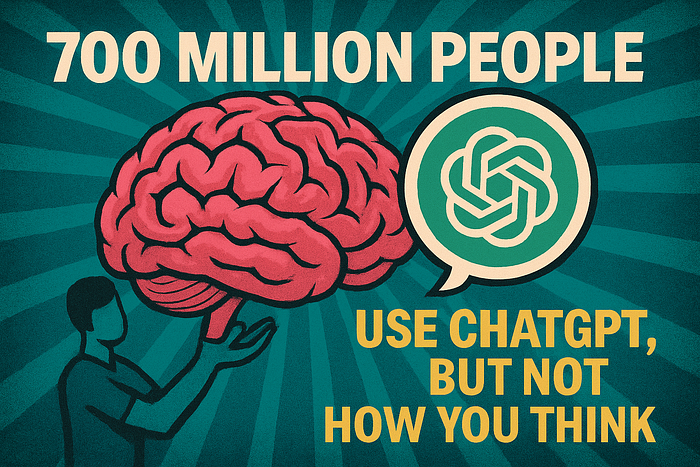
Best Machine Learning Blogs to Follow in 2022
Last Updated on January 1, 2022 by Editorial Team

Keep up with the best and the latest machine learning (ML) research blogs through reliable sources.
Author(s): Roberto Iriondo
From researchers to students, industry experts, and machine learning (ML) enthusiasts — keeping up with the best and the latest machine learning research is a matter of finding reliable sources of scientific work.
While blogs usually update in a more informal and conversational style, we have found that the sources in this list are accurate, resourceful, and reliable sources of machine learning research. Fit for all of those interested in learning more about the scientific field of ML.
Please know that the blogs listed below are by no means ranked or in a particular order. They are all incredible sources of machine learning research. Please let us know in the comments or by emailing us if you know of any other reliable blog sources in machine learning.

Machine Learning Blog, ML@CMU, Carnegie Mellon University
The machine learning blog at Carnegie Mellon University, ML@CMU, provides an accessible, general-audience medium for researchers to communicate research findings, perspectives on the field of machine learning, and various updates, both to experts and the general audience. Posts are from students, postdocs, and faculty at Carnegie Mellon [1].

Amazon Science Blog
Amazon Science has a fantastic scientific blog that allows you to filter by research area. Its blog encompasses work from Amazon’s science community, and its research areas include cloud and systems, computer vision, conversational AI, NLP, machine learning, robotics, search and information retrieval and security, privacy, and abuse prevention [13].

Distill
Distill is an academic journal in the area of machine learning. The distinguishing trait of a Distill article is outstanding communication and a dedication to human understanding. Distill articles often, but not always, use interactive media. Most articles (if not all) published at Distill often take 100+ hours for publishing [2].

Google AI Blog
Google AI conducts research that advances the state-of-the-art in the field. Google AI (or Google.ai) is a division of Google dedicated solely to artificial intelligence. It was announced at Google’s conference I/O 2017 by CEO Sundar Pichai [3]. The Google AI blog has a section specifically for machine learning research [4].

Neptune.AI
Neptune.AI provides a remarkable machine learning blog, offering tutorials on machine learning modeling, hyperparameter optimization, model evaluation, data exploration, generative models, machine learning tools, and many more [14]. Neptune.AI also offers a framework that makes it easier to track versions of your Jupyter notebooks, helps with managing your experimentation process, and integrates with your team’s workflow easily.

BAIR Berkeley
The BAIR blog provides an accessible, general-audience medium for researchers to communicate research findings, perspectives on the field, and various updates. Posts are from students, postdocs, and faculty in BAIR and intend to provide a relevant and timely discussion of research findings and results, both to experts and the general audience [5].

Open AI
OpenAI is a research laboratory based in San Francisco, California. Their mission is to ensure that artificial general intelligence benefits all of humanity [8]. The OpenAI blog brings state-of-the-art research in the field. Their mission is to discover and enact the path to safe artificial general intelligence (AGI) [8].

Machine Learning (Theory) by John Langford
The Machine Learning (Theory) blog is an experiment in the application of a blog to academic research in machine learning and learning theory by machine learning researcher John Langford [6]. He has emphasized that the field of machine learning “is shifting from an academic discipline to an industrial tool” [7].

DeepMind Blog
DeepMind works on some of the most complex and exciting challenges in AI. Their world-class research has resulted in hundreds of peer-reviewed papers, including in Nature and Science [9].

Machine Learning at MIT
MIT often produces state-of-the-art research in the field of machine learning. This filtered news stream provides the latest news and research on what is happening in the field of machine learning at MIT.

Colah’s Blog
Christopher Olah describes himself as a wandering machine learning researcher, looking to understand things clearly and explain them well [10]. Olah is a researcher with Open AI and formerly at Google AI. His blog has complete and exciting articles for the machine learning researcher and enthusiast — a gold mine of free, open, machine learning research.

Facebook AI’s Blog
Facebook AI is known for working on state-of-the-art research in the field. Their research areas focus on computer vision, conversational AI, integrity, NLP, ranking and recommendations, systems research, machine learning theory, speech, and audio, along with human and machine intelligence. The Facebook AI Blog encompasses excellent content, from blog posts to research publications [12].

Amazon AWS Machine Learning Blog
Amazon web services (AWS) is one of the most used cloud services around the world. They offer reliable, scalable, and accessible cloud computing services. Their research team publishes blog posts on machine learning state-of-the-art research and ML applications on the AWS blog [11].
If you happen to know of any other reliable machine learning blogs, please let me know in the comments. Thank you for reading!
Published by Towards AI
DISCLAIMER: The views expressed in this article are those of the author(s) and do not represent the views of Carnegie Mellon University nor other companies (directly or indirectly) associated with the author(s). These writings do not intend to be final products, yet rather a reflection of current thinking, along with being a catalyst for discussion and improvement.
Published via Towards AI
References
[1] Machine Learning Blog, ML@CMU About page| ML@CMU | https://blog.ml.cmu.edu/about/
[2] Publishing in the Distill Research Journal | Distill | https://distill.pub/journal
[3] Google AI | Wikipedia | https://en.wikipedia.com/wiki/google-ai
[4] Google AI Blog, Machine Learning | Google AI | https://ai.googleblog.com/search/label/Machine%20Learning
[5] Berkeley Artificial intelligence Research Blog, About page | BAIR | https://bair.berkeley.edu/blog/about/
[6] Machine Learning (Theory), about page | Machine Learning Theory | https://hunch.net/?page_id=122
[7] John Langford (computer scientist) | Wikipedia | https://en.wikipedia.org/wiki/John_Langford_(computer_scientist)
[8] About Open AI | Open AI | https://openai.com/about/
[9] DeepMind Blog | DeepMind | https://deepmind.com/research/
[10] Christopher Olah’s About Page | Colah’s Blog | https://colah.github.io/
[11] Amazon Web Services Blog | Amazon Web Services | https://aws.amazon.com/blogs/machine-learning/
[12] Facebook AI Blog | Facebook AI | https://ai.facebook.com/blog/
[13] Amazon Science | Amazon | https://www.amazon.science/blog
[14] Neptune.AI Blog | Neptune.AI | https://neptune.ai/blog
Take our 90+ lesson From Beginner to Advanced LLM Developer Certification: From choosing a project to deploying a working product this is the most comprehensive and practical LLM course out there!
Towards AI has published Building LLMs for Production—our 470+ page guide to mastering LLMs with practical projects and expert insights!

Discover Your Dream AI Career at Towards AI Jobs
Towards AI has built a jobs board tailored specifically to Machine Learning and Data Science Jobs and Skills. Our software searches for live AI jobs each hour, labels and categorises them and makes them easily searchable. Explore over 40,000 live jobs today with Towards AI Jobs!
Note: Content contains the views of the contributing authors and not Towards AI.
















